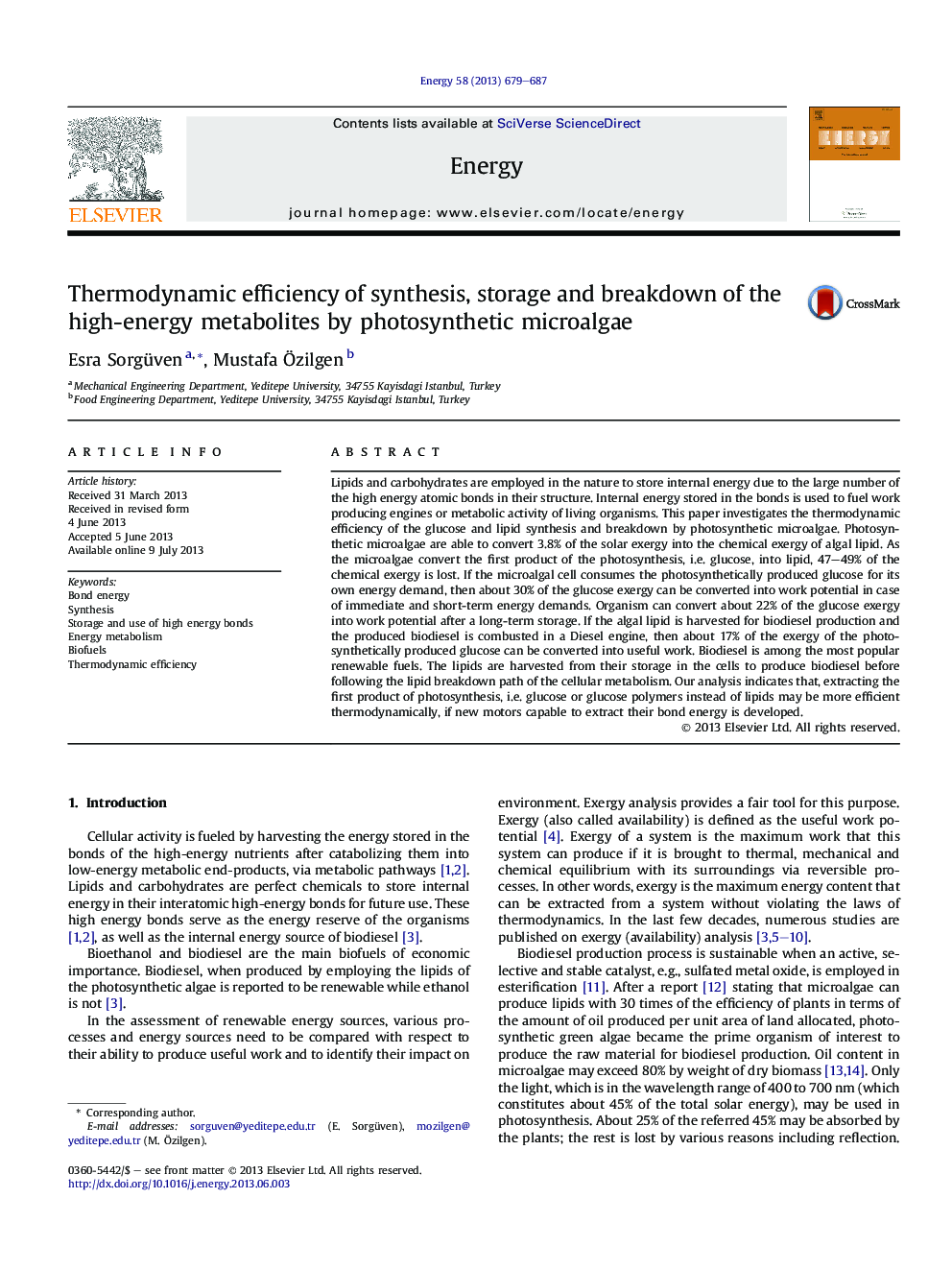| کد مقاله | کد نشریه | سال انتشار | مقاله انگلیسی | نسخه تمام متن |
|---|---|---|---|---|
| 1732928 | 1521488 | 2013 | 9 صفحه PDF | دانلود رایگان |

• Photosynthetic microalgae convert 3.8% of the solar exergy into the chemical exergy of algal lipid.
• Converting the first product of the photosynthesis (glucose) into lipid causes 47–49% of exergy loss.
• Organism can convert 30% of the glucose exergy into work potential for its own immediate or short-term energy demand.
• Organism can convert 22% of the glucose exergy into work potential after a long-term storage.
• Only 17% of glucose exergy can be converted into work by processing algal lipid into biodiesel outside the cell.
Lipids and carbohydrates are employed in the nature to store internal energy due to the large number of the high energy atomic bonds in their structure. Internal energy stored in the bonds is used to fuel work producing engines or metabolic activity of living organisms. This paper investigates the thermodynamic efficiency of the glucose and lipid synthesis and breakdown by photosynthetic microalgae. Photosynthetic microalgae are able to convert 3.8% of the solar exergy into the chemical exergy of algal lipid. As the microalgae convert the first product of the photosynthesis, i.e. glucose, into lipid, 47–49% of the chemical exergy is lost. If the microalgal cell consumes the photosynthetically produced glucose for its own energy demand, then about 30% of the glucose exergy can be converted into work potential in case of immediate and short-term energy demands. Organism can convert about 22% of the glucose exergy into work potential after a long-term storage. If the algal lipid is harvested for biodiesel production and the produced biodiesel is combusted in a Diesel engine, then about 17% of the exergy of the photosynthetically produced glucose can be converted into useful work. Biodiesel is among the most popular renewable fuels. The lipids are harvested from their storage in the cells to produce biodiesel before following the lipid breakdown path of the cellular metabolism. Our analysis indicates that, extracting the first product of photosynthesis, i.e. glucose or glucose polymers instead of lipids may be more efficient thermodynamically, if new motors capable to extract their bond energy is developed.
Journal: Energy - Volume 58, 1 September 2013, Pages 679–687